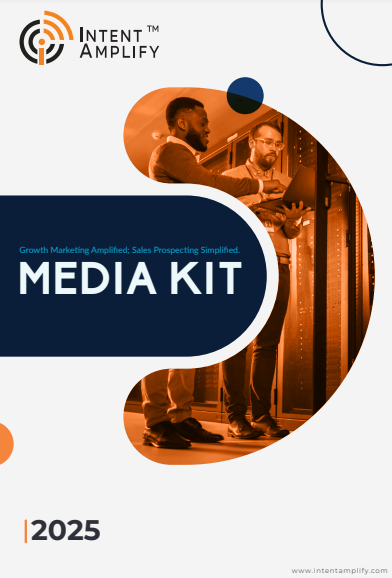
7 Proven Tips for Writing High-Converting BDR Outreach Emails
- Last updated on: August 22, 2025
Business Development Representatives (BDRs) occupy the tip of the spear of contemporary B2B sales. Their outreach emails can decide if a dialogue starts or a door closes. As of 2025, with inboxes filled to the brim with robotic pitches and cliche templates, crafting high-converting outreach emails is an art and science.
A properly written BDR email can cut through the noise, pique interest, and get a prospect nearer to scheduling a meeting. But the task is challenging – recent industry reports have shown that the cold email open rate is typically around 40%, with reply rates as low as 5%. The key difference between ignored emails and productive conversations is execution: subject lines, personalization, timing, and a value-first mentality.
This post distills seven successful tips to get BDRs to write converting emails. Whether you’re prospecting a CTO at a North American cybersecurity company or a marketing leader at an EMEA SaaS startup, these tips will make you stand out, win decision-makers over, and create a more powerful pipeline.
Tip 1: Write a Compelling, Personalized Subject Line
Your subject line is your initial impression and usually your sole opportunity to grab attention. Research indicates that 47% of recipients determine whether to open an email based on nothing other than the subject line. For BDRs, the subject line isn’t merely text; it’s a gatekeeper to your entire outreach strategy.
Personalization is key here. Rather than using vague lines such as “Quick question” or “Following up”, make your subject line personal to the recipient’s universe. Naming a prospect’s business, a recent success, or even industry-specific pain points can significantly increase open rates. For instance:
- “Cutting cloud spend for fintech leaders such as [Company]”
- “Congrats on [Milestone] – a quick idea for your team”
Be concise, precise, and intriguing. Don’t resort to clickbait; experienced executives can recognize it in a heartbeat and will most definitely ignore or flag it as spam.
Lastly, don’t underrate testing. A/B testing two versions of a subject line (personalized, non-personalized) may uncover what works for your targeted audience. In the long run, this data-based strategy improves your outreach campaign and the odds of getting read instead of deleted.
Tip 2: Focus on Relevance, Not Length
One of the most common mistakes BDRs make is equating long emails with value. In reality, executives rarely have time to read long messages, especially from unfamiliar senders. Instead, what matters most is relevance.
A high-converting BDR email is to the point, addressing the prospect’s particular pain point, opportunity, or business objective. Read up on their company, industry developments, and recent announcements to make it relevant. For example, a SaaS BDR calling on a VP of IT might mention a recent press release on the company’s cloud migration journey and then connect the dialogue on how your solution enhances cost savings or scalability.
Make your message brief: three to five brief sentences usually do the trick. The opening line can indicate personalization (i.e., “I saw [Company] recently entered APAC”), the middle emphasizes the value you can deliver, and the final line asks for a next step.
Consider it this way: executives don’t read emails to be taught – they read them to fix something. Relevance is what turns a cold outreach email into a warm, meaningful discussion. If you can show clear alignment between their objectives and your solution in less than 100 words, you’ve already outcompeted most others.
Tip 3: Leverage Social Proof and Credibility Boosters
Trust is the currency of B2B contact. Why should they trust your email if your prospect doesn’t know you? Social proof is the key to building credibility and driving response rates in this place.
Social proof can be any of the following:
- Client testimonials: “We recently assisted [High-profile Brand] in reducing onboarding time by 30%.”
- Industry-specific proof: “Cybersecurity experts throughout EMEA are leveraging our platform to streamline compliance.”
- Quantifiable results: “Our clients report an average 25% increase in sales pipeline within six months.”
When used correctly, these credibility signals reduce friction and make your email more compelling. However, avoid overwhelming your message with too many stats or name-drops. The goal is to reassure the prospect that your solution is proven and trusted by peers, not to brag.
Another strategy is to leverage industry thought leadership. For example, citing a reputable analyst report or quoting a current industry trend can make your point stick. By using credibility enhancers, you take your outreach from “just another sales pitch” to a credible, value-driven invitation to connect.
Tip 4: Make Your Message Human and Conversational
BDR outreach typically fails because it reads like… outreach. Too formal, too salesy, too corporate language is a barrier, not a bridge. In 2025, top-performing BDR emails feel like friendly, thoughtful conversation openers rather than hard pitches.
Think about how you’d approach someone at a networking event, you wouldn’t open with a scripted sales deck. Instead, you’d start with curiosity, a compliment, or an observation. Your email should do the same. Use natural language, contractions (“you’re” instead of “you are”), and a tone that feels approachable.
For example, instead of writing: “We are reaching out to introduce our enterprise-grade SaaS solution that improves operational efficiency.” Try: “I noticed your team recently scaled operations – curious if simplifying workflows is a priority right now?” This shift in tone makes your email feel human and relevant, not robotic or automated.
Storytelling is another underrated tool. A quick anecdote about how a client faced a similar challenge and solved it using your solution can spark curiosity without feeling like a hard sell. Just keep it brief.
Last but not least, keep in mind that executives desire to connect with humans, not business entities. End your message with your name, title, and even a hint of personality. Including a LinkedIn link or brief personal comment (e.g., “Love your podcast on SaaS growth”) will build rapport outside of the inbox. The bottom line: The more conversational and human your outreach sounds, the greater the chance it will receive a response.
Tip 5: Design Clear, Actionable CTAs
Your email always needs to answer one question: What do you need the prospect to do next? Without a clear call-to-action (CTA), even an effective email can be ignored. The most effective CTAs are low-commitment, simple, and action-based. In BDR outreach, you’re not requesting a contract – you’re requesting a call.
Examples are:
- “Would you like to chat for 15 minutes next week to investigate this?”
- “Is [day/time] good for a quick call?”
- “Can I send over a one-page report specifically for your team?”
See how each of these CTAs is concrete, easy to agree to, and refrains from burdening the prospect. Contrast this with general CTAs such as “Let me know what you think,” which burdens the recipient. One of the best practices is to give two options instead of one. For instance: “Would Tuesday or Thursday be preferable for a quick call?” This phrasing allows the prospect to reply more easily without analyzing too much.
Also, let your CTA match the value you’ve stressed in the email. If you’ve spoken about assisting fintech chiefs in lowering compliance expenses, your CTA would be: “Delighted to tell you how we assisted [Client] in saving 20% on compliance overhead – would a brief call be beneficial?” Keep in mind that the CTA is the conversion bridge from curiosity. Make it short, concise, and easy to respond to.
Tip 6: Test, Measure, and Optimize for Conversions
Even the most well-written outreach emails won’t land every time. That’s why testing and optimization are key components of BDR success. In 2025, data-driven sales teams view outreach as an experiment in progress, not a singular effort.
Begin with A/B testing. Experiment with one thing at a time – subject line, first-line personalization, CTA wordings, or even email length. For instance, compare a subject line that mentions cost savings against a subject line that talks about speed. This will give you an idea of what works with various personas in SaaS, fintech, or cybersecurity.
Monitor important metrics more than mere open rates. Consider reply rates, click-throughs, and booked-meeting ratios. Don’t neglect timing. Experimenting with varying send times (e.g., executives in the early mornings, mid-level managers in the afternoons) can play a big role in engagement. Equally important is optimizing follow-up sequences so that your persistence is professional, not aggressive.
Lastly, return insights to your sales playbook. If you find that short, narrative-driven emails perform better than longer, technical ones, make that your team’s new normal. Optimization isn’t about guesswork; it’s about learning every step of the way and replicating what works.
Tip 7: Utilize AI and Data for Hyper-Personalization
The future of BDR outreach is at the crossroads of AI and personalization. Inboxes are busier than ever before, and generic emails just won’t do. AI platforms now enable BDRs to examine huge sets of data – technographics, firmographics, and prospect behavior to write highly targeted messages in bulk. As an example, AI can recognize that a prospect recently brought on a new CMO, entered a new market, or secured funding. Equipped with this information, your email can refer to these achievements and establish your solution as opportune.
Technology is only part of the solution. Hyper-personalization also needs to be human-like. What that means is marrying AI insights with a conversational, empathetic voice. Rather than sending “cookie-cutter personalization” such as “I saw you attended Stanford,” aim for context: “I noticed [Company] is growing into APAC, many of our SaaS customers in that region grappled with X challenge. Wondering if that’s on your radar?”
When executed properly, AI does not displace human touch – it enhances it. It allows BDRs to multiply outreach while ensuring that each email is timely, personal, and conversion-driven.
The Role of Follow-Up Sequences in BDR Success
Even the most well-written outreach email will not receive a response on the initial try. That is why strategic follow-ups are essential to BDR success. Research suggests that 92% of salespeople stop after four or fewer attempts, even though most deals require more contact attempts.
A follow-up series must be a balance between professionalism and persistence. Every follow-up email must deliver incremental value and not be a repeat pitch. For instance, the first follow-up can include a relevant case study, the second can reference an industry observation, and the third can show a new angle on the prospect problem.
Spacing also plays a role. Following up with all of your messages in a couple of days can overwhelm the recipient. Instead, space your cadence over one to two weeks, alternating between emails and other forms like LinkedIn messages or even calls.
The secret is to stay relevant and be mindful of the prospect’s time. A considerate order of sending not only raises your conversion chance but also shows real interest in establishing a relationship rather than making a sale.
Turning Outreach into Conversations
In B2B, outreach emails are frequently the initial handshake with your brand. Poorly done, they go into spam folders. Done well, they lead to conversations, relationships, and revenue chances. The seven tips presented here – writing compelling subject lines, being relevant, using social proof, being conversational, making clear CTAs, optimizing through testing, and embracing AI-powered personalization are a pragmatic blueprint for success as BDRs in 2025 and beyond.
At Intent Amplify®, we assist technology, SaaS, fintech, and cybersecurity businesses in converting their outreach efforts into predictable, scalable pipeline growth. Regardless of whether it’s account-based marketing, omnichannel demand generation, or sales enablement, our objective is the same: to assist you in initiating conversations that translate to revenue. Ready to elevate your BDR outreach? Reach out to Intent Amplify and learn how we can drive your growth journey.
FAQs
Q1. What are BDR outreach emails?
A BDR outreach email is a cold or warm email from Business Development Representatives to prospective customers to initiate a conversation, schedule an appointment, or qualify interest in a solution.
Q2. How long should a BDR outreach email be?
Ideally, fewer than 100 words. Busy executives want brief, useful messages that offer quick value. Three to five brief sentences are generally the most effective.
Q3. How many follow-up emails should a BDR send?
Most experts advise 5–7 follow-ups over two to three weeks. Persistence pays off, but emails need to bring value and not repeat the same pitch.
Q4. What’s the best time to send a BDR outreach email?
It is up to your personality and location. Morning hours (7–9 a.m.) tend to suit top executives, and afternoons tend to suit middle-management. Testing is crucial.
Q5. Does personalization actually enhance BDR email effectiveness?
Yes. Personalized subject lines and customized messaging can boost open rates by 26% and reply rates by more than 30%, according to industry standards.




